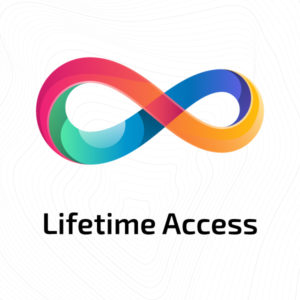Many students are struggling to keep up because they can’t easily get and share study materials. A surprising fact is that mobile technology, specifically phone number trackers like GEOfinder, could be a game-changer here.
This article will show you how these tools offer a simple yet effective way to make course details more accessible to everyone. Keep reading to find out how!
Understanding Educational Inequality
Educational inequality means not everyone gets the same chances to learn and succeed in school. Kids from different backgrounds face hurdles that keep them from unlocking their full potential.

Definition and Meaning
Educational inequality refers to the unequal distribution of academic resources and opportunities among students based on various socio-economic, racial, and geographic factors. This leads to achievement gaps in education where certain groups of students do not achieve the same level of educational success as others. Reasons for these inequalities include:
– limited access to quality teachers
– inadequate school facilities
– fewer learning materials
Addressing this issue involves ensuring equal opportunity education for all students regardless of their background. It entails bridging the digital divide by offering technological innovations in education, such as phone number trackers.
By leveraging these technologies, educators can help close achievement gaps and promote accessible education across different communities.
Reasons for Educational Inequality
Educational inequality affects millions of students worldwide. It results from a complex mix of factors that hinder equal educational opportunities.
1. Economic disparities limit access to quality education. Families with lower incomes often can’t afford the resources or tutoring needed.
2. Racial inequality influences educational outcomes. Students from marginalized racial backgrounds may face discrimination and lower expectations from educators, impacting their academic achievements.
3. Geographic location plays a crucial role. Children living in rural or impoverished areas have fewer educational facilities and experienced teachers available to them.
4. Limited digital access widens the gap. Not having internet or computers at home puts students at a disadvantage, especially for distance learning.
5. Social support systems vary widely. Those without a strong network of encouragement from family or mentors may struggle more academically.
6. Language barriers can impede learning. Non-native speakers may find it challenging to keep up in environments where their first language isn’t used for instruction.
7. The quality of schools differs greatly. Institutions in wealthier communities often receive more funding, leading to better facilities and more learning opportunities.
8. Disability accommodations are not always sufficient. Students with disabilities might not receive the tailored support they need to succeed due to a lack of resources or awareness.
These factors collectively contribute to the perpetuation of educational inequality, making it crucial for innovations like phone number trackers for accessible course information and other technological tools to bridge these gaps effectively.

Impact of Educational Inequality
Educational inequality creates a wide gap in achievement and opportunities among students from different socio-economic backgrounds. Students who face this form of social inequality often miss out on educational resources, quality teachers, and advanced courses, putting them at a disadvantage right from the start. These challenges can lead to lower academic scores, decreased college enrolment rates, and limited job prospects in adulthood.
The digital divide only widens this gap by restricting access to technology-driven learning tools. Without equal digital access, students from less privileged backgrounds struggle even more to keep up with their wealthier peers.
This scenario calls for innovative solutions like phone number trackers that ensure course information is accessible to everyone, bridging the gap toward educational equity. Next, we discuss how bridging the digital divide plays a critical role in addressing these issues.
Bridging the Digital Divide
Technology tools such as phone number trackers are becoming increasingly popular in connecting students around the world, but such technologies can also have negative consequences, such as leaks of your personal data.
The Role of Technology in Education
Technology in education opens doors to bridging the digital divide, making learning accessible for everyone. It allows students from all backgrounds to access vast resources, engage in distance learning, and explore new ways of acquiring knowledge.
Tools like phone number trackers can guide learners to obtain information easily, breaking down barriers that prevent them from reaching educational equity. Innovations such as educational apps and online platforms provide a space where marginalized students can find social support and connect with mentors beyond their immediate environment.
This shift towards technology-driven solutions helps close achievement gaps and fosters an inclusive atmosphere where every student has an equal opportunity for success. Through these technological means, education becomes more than just a pursuit – it transforms into an accessible pathway toward reducing inequality in education across different demographics.
Challenges Faced by Marginalized Students
As we delve deeper into the topic, it’s crucial to address the hurdles marginalized students face. These challenges often prevent them from fully benefiting from tech innovations.
1. Lack of digital access stands as a major barrier. Many students do not have reliable internet at home or cannot afford the data plans needed for distance learning.
2. Limited availability of devices like computers or smartphones also hampers students’ ability to engage in online classes.
3. A gap in digital skills means some students struggle more than others when trying to navigate online platforms for their education.
4. The high cost of educational materials online can exclude those from lower-income families, widening the educational equity gap.
5. Language barriers present another challenge, especially for non-native speakers who may find it difficult to understand studying materials.
6. Students with disabilities might find most online resources are not tailored to be accessible.
7. Social support systems are often weaker for marginalized groups, making it harder for these students to seek help or resources when they encounter academic challenges.
8. Racial inequality in education emerges in various forms, which affects engagement and motivation among students of color.
9. Geographic location influences access to quality education and technological resources, with rural areas often at a disadvantage due to infrastructure constraints.
10. Lastly, the psychological effects of social inequality can impact student performance and motivation, creating an additional layer of difficulty in achieving academic success.
Addressing these challenges requires innovative solutions and a collective effort to ensure that all students have equal opportunities in education, regardless of their background or circumstances.
How Phone Number Trackers Can Help
Phone number trackers play a crucial role in bridging the digital divide, especially in regions where educational inequality is flourishing. These tools allow educators and organizations to send study materials directly to students’ phones.
This method ensures that those who do not have regular access to the Internet can still receive updates on educational content and resources. By using technology, schools can ensure that every student has the opportunity to continue their education, regardless of their internet access status.
The use of phone call-tracking technology also contributes to accessible education by allowing teachers to provide support through voice calls or text messages. This approach helps to maintain a social connection through digital technology among students who may feel isolated.
This is a step forward in reducing inequalities in education, as all students have equal opportunities to succeed in their studies. This strategy paves the way for ensuring accessible education for everyone.

Ensuring Accessible Education
Learning about how phone number trackers unlock doors to vital course information can change the game for students everywhere.
Importance of Accessible Information
Accessible information is a cornerstone of educational equity. It ensures that all students, regardless of their background or location, have the opportunity to learn and grow. With accessible learning materials, we can close achievement gaps and provide equal-opportunity education for everyone.
Phone number trackers play a crucial role in making education more reachable. They allow students who lack digital access due to the digital divide to stay connected using simple technology they already have: mobile phones.
By leveraging phone tracking technology, educators can distribute course materials directly to students’ phones, ensuring that distance learning doesn’t widen the gap but bridges it instead. This approach supports reducing inequality in education by keeping all students informed and engaged, no matter where they are or what obstacles they might face.
How Phone Number Trackers Can Provide Access
Phone number trackers turn simple mobile devices into powerful tools for accessing educational content. They don’t require high-speed internet or the latest smartphone technology, which makes them ideal for students in areas with limited internet access. By dialing a specific number or sending a text message, students can receive updates on course availability and assignments and even participate in quizzes.
Educational equity improves as more students gain the ability to check their study materials anytime and anywhere. Schools can send out mass notifications about new learning materials or changes in the schedule directly to students’ phones.
This keeps everyone informed and engaged, regardless of their access to online resources. Moving on, let’s explore some examples of how this approach has already made significant strides around the world.
Examples of Successful Implementation
Educational equity demands innovative solutions. Using phone number trackers to share study materials has shown promising results.
1. Schools in rural areas have started texting course updates and assignments directly to students and parents. This approach keeps everyone informed, reducing the digital divide.
2. A community college implemented a system where students can inquire about course availability and receive real-time responses through SMS. This has made education more accessible for those without reliable internet access.
3. Several non-profit organizations partnered with tech companies to launch a service that sends out educational resources via phone notifications. These resources include reading materials, video links, and interactive quizzes, promoting equal opportunity education.
4. In some regions, educators have set up automatic alerts for upcoming deadlines and exam schedules sent via text messages. This initiative helps students stay organized and supports their academic achievement despite varying levels of digital access.
5. An innovative program was rolled out where students could submit homework questions through text messages and receive guidance from tutors within hours. This service bridges the gap for students who need extra support but cannot access traditional help sessions due to distance or financial constraints.
6. To combat racial inequality in education, a pilot project was launched that delivers culturally relevant curriculum content through SMS to engage minority students better and connect them with their heritage while supporting their educational needs.
7. Universities have begun using SMS-based surveys to gather feedback on course content and teaching methods, ensuring that all voices are heard regardless of technological barriers; this feedback loop is crucial for continually improving course accessibility.
Each example demonstrates how targeted initiatives can make a significant difference, leveraging technology to address educational inequalities effectively
The Need for Collective Action
To truly bridge the digital divide and provide equal opportunity education, collective action is essential. Governments, educational institutions, tech companies, and communities must work together to leverage technology like phone number trackers for accessible learning materials. This collaboration ensures that all students have the tools they need to succeed.
Community involvement plays a crucial role in reducing educational inequality. By supporting initiatives that use phone-tracking technology for education access, local organizations can help close achievement gaps.
Future Implications and Solutions
Using technological innovations like phone number trackers stands as a pivotal solution for educational equity. By integrating this technology into our education systems, we can provide equal-opportunity education and significantly reduce inequality. Looking ahead, it’s vital to foster partnerships between tech companies, educators, and communities to further refine and tailor phone tracking technologies for educational purposes.
This collaborative approach will not only enhance digital access but also empower students with the resources they need for distance learning. As these solutions gain traction, they promise a future where every student can navigate educational barriers with confidence, leading to a more inclusive learning environment for generations to come.
Conclusion
Everyone has a role in fighting educational inequality. Exploring new solutions like phone number trackers could open doors to equal learning opportunities for all students.






 March 25, 2024
March 25, 2024






